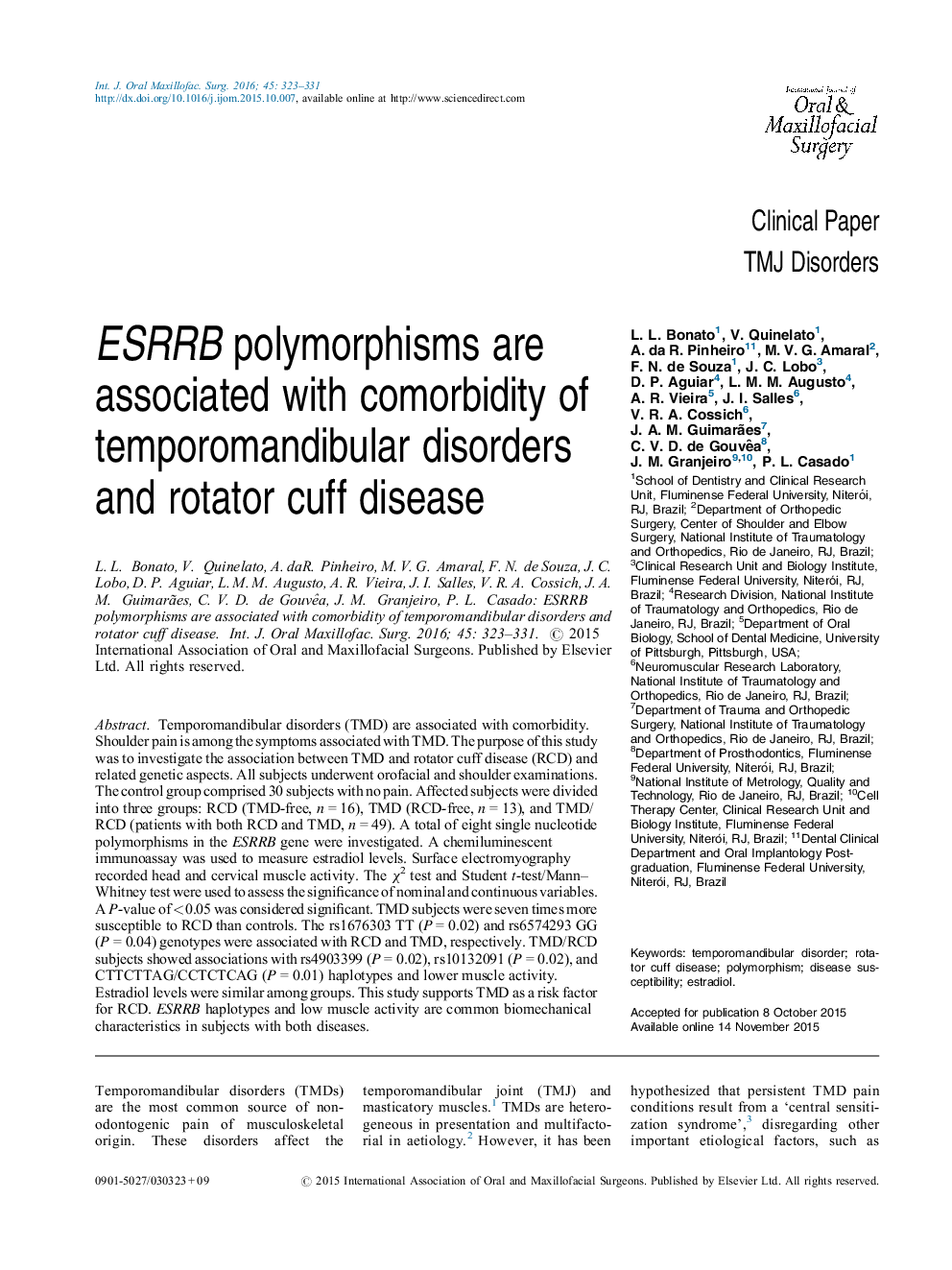| Article ID | Journal | Published Year | Pages | File Type |
|---|---|---|---|---|
| 3131862 | International Journal of Oral and Maxillofacial Surgery | 2016 | 9 Pages |
Temporomandibular disorders (TMD) are associated with comorbidity. Shoulder pain is among the symptoms associated with TMD. The purpose of this study was to investigate the association between TMD and rotator cuff disease (RCD) and related genetic aspects. All subjects underwent orofacial and shoulder examinations. The control group comprised 30 subjects with no pain. Affected subjects were divided into three groups: RCD (TMD-free, n = 16), TMD (RCD-free, n = 13), and TMD/RCD (patients with both RCD and TMD, n = 49). A total of eight single nucleotide polymorphisms in the ESRRB gene were investigated. A chemiluminescent immunoassay was used to measure estradiol levels. Surface electromyography recorded head and cervical muscle activity. The χ2 test and Student t-test/Mann–Whitney test were used to assess the significance of nominal and continuous variables. A P-value of <0.05 was considered significant. TMD subjects were seven times more susceptible to RCD than controls. The rs1676303 TT (P = 0.02) and rs6574293 GG (P = 0.04) genotypes were associated with RCD and TMD, respectively. TMD/RCD subjects showed associations with rs4903399 (P = 0.02), rs10132091 (P = 0.02), and CTTCTTAG/CCTCTCAG (P = 0.01) haplotypes and lower muscle activity. Estradiol levels were similar among groups. This study supports TMD as a risk factor for RCD. ESRRB haplotypes and low muscle activity are common biomechanical characteristics in subjects with both diseases.
